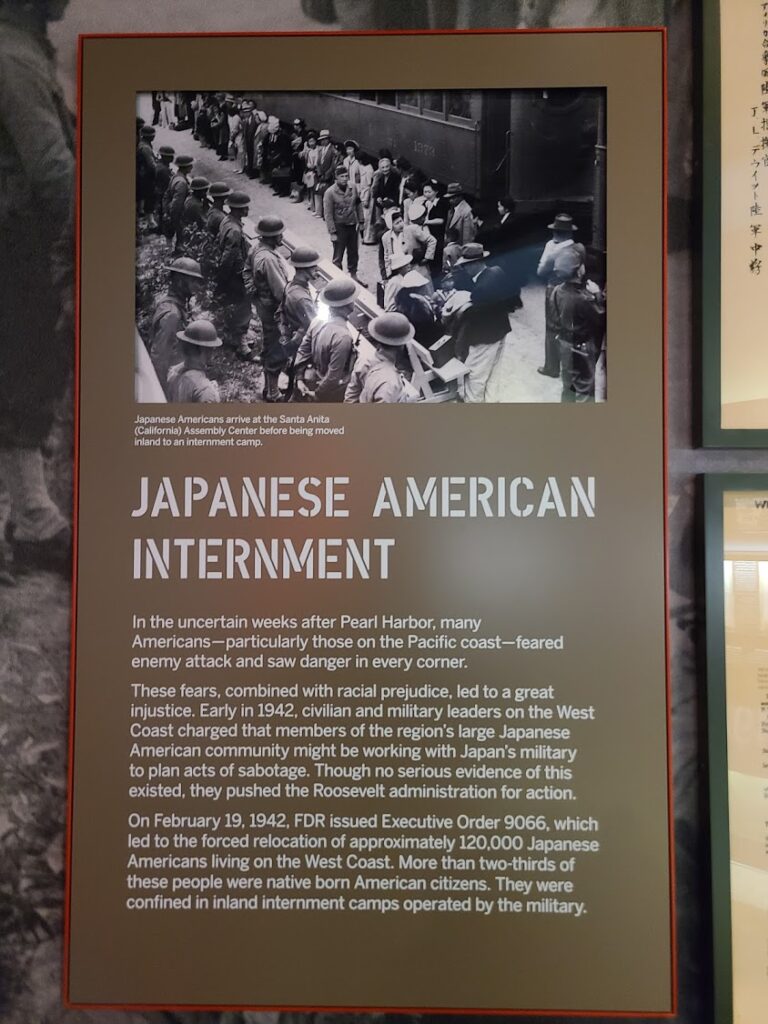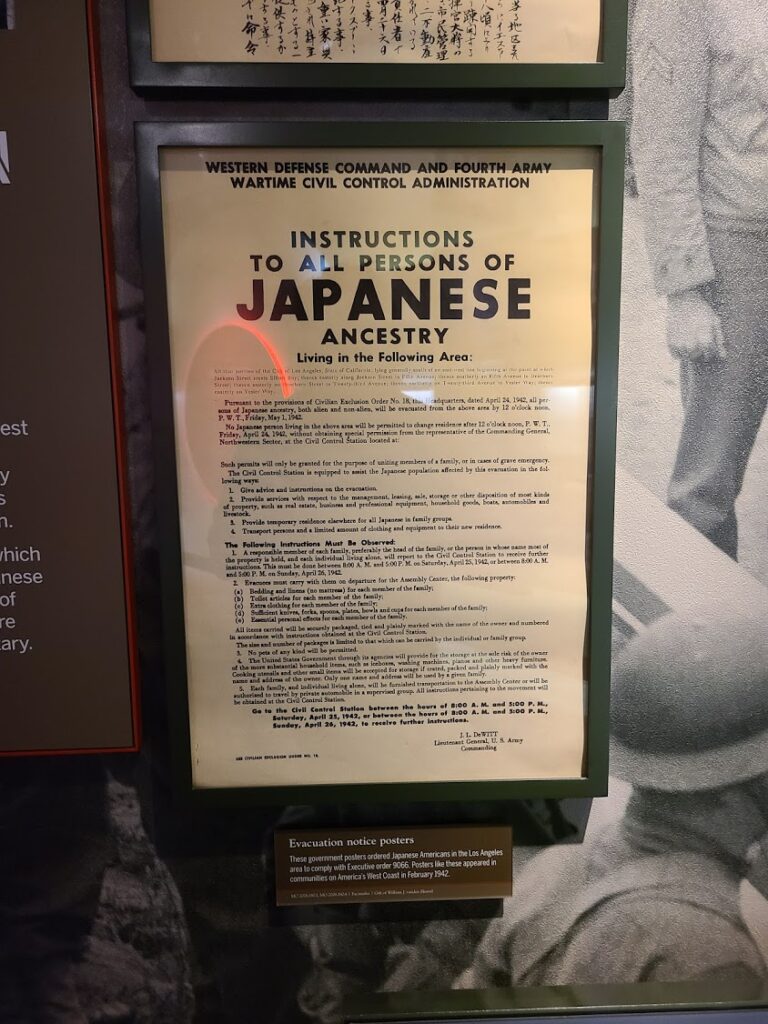The Volokh Conspiracy
Mostly law professors | Sometimes contrarian | Often libertarian | Always independent
Constitutional Places: The FDR Presidential Library
The library offered some balance with respect to Court Packing and Japanese Internment.
On Saturday, I visited the FDR Presidential Library in Hyde Park, New York. I had previously visited seven other presidential libraries. Bush 43, Clinton, Bush 41, Reagan, Carter, Ford, and Johnson. (I wrote about my visit to the Clinton library here).
The FDR library was very impressive. Roosevelt confronted so much in four terms. The Great Depression. The New Deal. World War II. And so on. It was difficult to condense everything in a few exhibits. By contrast, the Carter and Bush 41 libraries felt like they were working hard to fill large spaces. The one-termers just don't have as much to show.

In this post, I will highlight how the museum handled topics related to Supreme Court during FDR's tenure.
First, there was the gavel used to announce FDR's nomination in 1932. If you squint, Robert Jackson signed the plaque as Secretary.
Second, here is a photograph of Chief Justice Hughes issuing the oath of office:
Third, there was an exhibit on FDR's first 100 days. The descriptions were refreshingly balanced:
Some of FDR's initiative succeeded. Others failed. Some programs were contradictory.
Fourth, there were several photos about the National Industrial Recovery Act (NRA).
And the exhibit offered this description of Schechter Poultry:
. . . but the NRA proved ineffective. Its codes were unwieldy, and sometimes, ludicrous--including regulations for industries like shoulder pads, dog food, and burlesque theaters. Many codes favored larger businesses and encouraged monopolistic practices that hindered economic recovery. Few mourned when the NRA was declared unconstitutional in 1935.
Fifth, there was an exhibit that discussed Court packing in FDR's second term.
But FDR's plan's soon went awry. Flushed with victory, the emboldened President overreached. A divisive battle with the Supreme Court and an unsuccessful effort to "purge" conservatives from the Democratic Party energized his opponents.
The next panel was titled "The Supreme Court fight."
During FDR's first term the Supreme Court became a major threat to the New Deal. A conservative 5-4 Court majority disapproved of Roosevelt's expansion of Federal power. In 1935-1936, these Justices began striking down key New Deal laws, including the NRA and AAA, as unconstitutional. FDR feared future rulings would overturn other reforms, including Social Security.
Mostly accurate. Schechter Poultry, which declared the NRA unconstitutional, was 9-0.
In 1937, Roosevelt moved to remake the Court. He requested legislation empowering him to add up to six new Justices for every current justice over age 70. Outraged critics charged he wanted to "pack" the Court. The Senate buried FDR's proposal in committee.
This passage underplays the extent to which members of the Democratic party opposed the plan. Both Houses of Congress had large majorities of Democrats.
The outcome of the Court fight was FDR's greatest legislative defeat. but it became apparent that while he lost the battle, he won the war. During 1937, one conservative justice switched allegiances and began supporting New Deal legislation.This switch--and later Court retirements--let FDR shape a pro-New Deal majority without radical change.
This passage buys into the "Switch in Time" narrative that has been fairly conclusively debunked. And Justice Roberts' so-called "switch" occurred in West Coast Hotel, which involved a state law, rather than a federal law.
And here's the kicker:
From 1937 until the 1990s the Court consistently supported a broad reading of Federal power in the economy.
This far, but no farther.
There are also two political cartoons. One depicts the Senate Judiciary Committee telling the President that his proposal "violates every sacred tradition of American democracy." Another cartoon depicts Roosevelt driving a steam roller, labelled "Court Reform Plan," ready to plow over a Supreme Court Justice.
Sixth, there is an extensive exhibit on Japanese internment. To the library's credit, the exhibit acknowledges that the threat of Japanese sabotage was never substantiated:
In the uncertain weeks after Pearl Harbor, many Americans--particularly those on the Pacific coast--feared enemy attacks and saw danger in every corner.
These fears, combined with racial prejudice, led to a great injustice. Early in 1942, civilian and military leaders on the West Coast charged that members of the region's large Japanese American community might be working with Japan's military to plan acts of sabotage. Though no serious evidence of this existed, they pushed the Roosevelt administration for action.
On February 19, 1942, FDR issued Executive Order 9066, which led to the forced relocation of approximately 120,000 Japanese Americans living on the West Coast. More than two-thirds of these people were native born American citizens. They were confined in inland internment camps operated by the military.
The exhibit also offered a somewhat candid account of Eleanor Roosevelt's position on internment.
Eleanor Roosevelt opposed internment and tried to stop FDR from issuing Executive Order 9066. Concerned about the potential hysteria against Japanese Americans, she visited Japanese American communities and praised their patriotism. But when she discussed the issue with FDR he was unmoved.
ER did not speak out publicly against her husband's decision, opting instead to work quietly behind the scenes. But many in the Japanese American community knew of her sympathies. In April 1943 she visited the Gila River relocation camp in Arizona. She was impressed by the character and perseverance of the detainees. In a report to FDR she urged him to relax the order and allow detainees to return to their homes. ER's report helped convince FDR to explore releasing some with work permits. By the end of 1943, one-third had been released from the camps. It would not be until January 1945, however, before the Executive order was rescinded and all the internees were released.
I discussed Eleanor Roosevelt's public defense of internment in a 2015 blog post.
As best as I can recall, the name Fred Korematsu appeared nowhere in the exhibit. There were opaque references to Korematsu and Hirabayashi as "two wartime cases," but nothing about Ex Parte Endo:
The Supreme Court upheld the President's Executive order in two wartime cases. But in the 1980s, the United States Congress acknowledged this gross violation of the civil liberties of American citizens and voted to provide some financial compensation to individuals confined in the camps. The Supreme Court also vacated its earlier wartime rulings.
This last sentence is perplexing. Is the exhibit referring to Trump v. Hawaii, which declared Korematsu overruled in the "Court of history"? I'm not entirely sure what is going on here.
Finally, there is a picture of Chief Justice Harlan Fiske Stone administering the oath of office to President Truman.
I hope others can visit the FDR library. I still need to visit five other presidential libaries: Nixon, Kennedy, Eisenhower, Truman, and Hoover.














Show Comments (32)